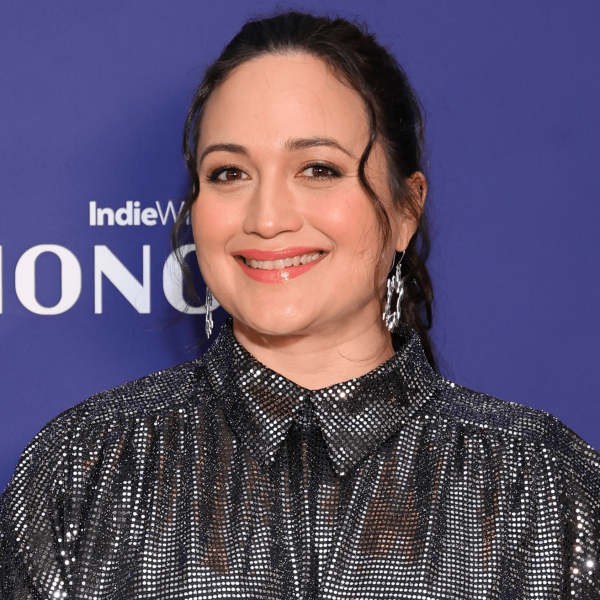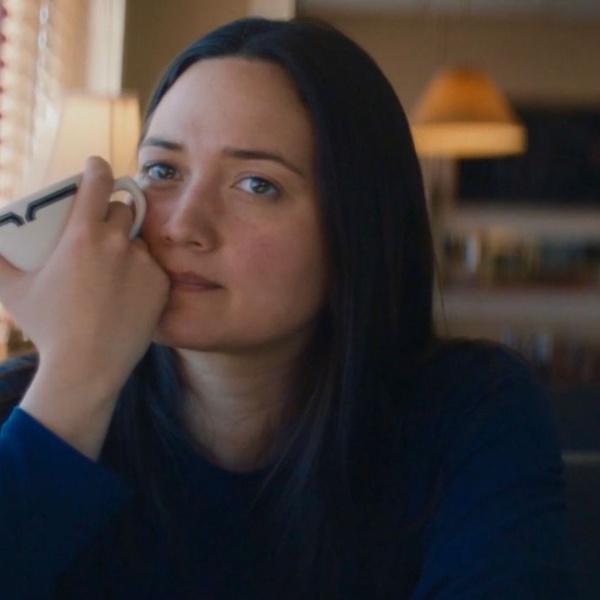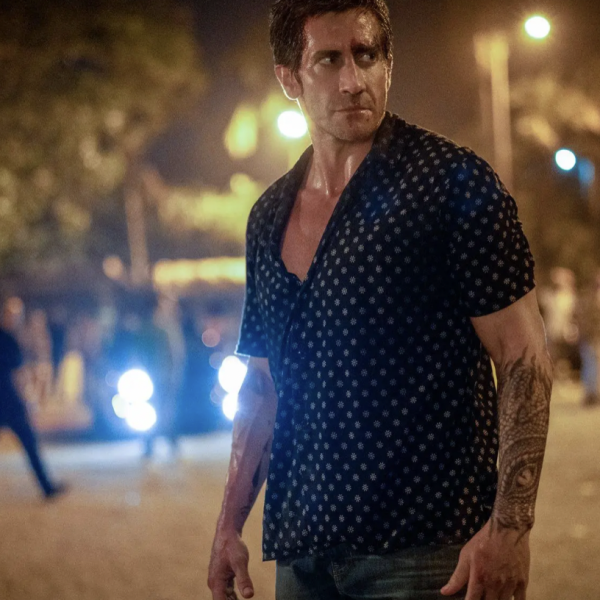As beloved as Tim Burton’s original 1988 classic “Beetlejuice” may be, no one could accuse the film of having much in the way of deep human emotions. It was a vibes movie with a transfixing level of world-building, the imagination to rewrite the rules of life and death, and the funny bone to merge both realms for a calypso dance sequence. It became a legacy credit for actors Geena Davis, Catherina O’Hara, and Winona Ryder, not to mention the decaying bio-exorcist at the undead heart of it all: Michael Keaton.
After several abortive attempts at a sequel over the intervening decades, director Tim Burton has — with a few exceptions — reassembled his original core squad, including composer Danny Elfman. To the mix, he has added a perfectly-chosen menage of new names (Willem Dafoe, Jenna Ortega, Monica Bellucci) and pulled off a maturation of the two-for-one world he once built from the waiting room of the Afterlife to Deetz family loft in Winter River.
These two worlds and the rules that enable characters to move between them remains an all-consuming pleasure. The giddy highs of watching actors catapulted from a spooky family home into a highly bureaucratic purgatory in the time it takes to draw a chalk door are unparalleled, tapping into the childlike awe of discovering a portal between dimensions. Think “Alice’s Adventures in Wonderland” filtered through “The Addams Family” with a scattergun sense of humor pulling from absurdism to deadpan to satire to the strain of maximalist visual weirdness that refreshes Burton’s status as great.
Embedded within a jamboree of gags, visual spectacle, and charming practical effects is a tale of a bereaved mother and daughter reconnecting after the loss that drove them apart. No one expected the “Beetlejuice” sequel to plumb grief-induced relationship fissures or to subtly riff on the theme of how romance can leave women open to predators — nor, for that matter, to fold in a reference to Mario Bava’s “Kill Baby Kill” — but, hey, 36 years have passed. Maybe that’s the magic number in the maturation of a 600-year-old ghost.
Beetlejuice as a character represents a shift in Burton’s focus here. Once positioned as the ne plus ultra of untethered maniacs, he is now a mellow alternative to the opportunistic men buzzing around adult Lydia Deetz (Ryder) and her teenage daughter, Astrid (Jenna Ortega). After being summoned by the repetition of his name three times, Keaton occupies the role with the same off-the-wall pizazz as previously, but — how to put this — he is less annoying, more restrained, slightly melancholic (maybe). and his bag of tricks have their uses as the fires of hell begin to lap at the Deetz ladies’ feet.

After an atmospheric opening title sequence that replicates the original and reminds us why Elfman is the gothic circus-master’s musical alter-ego, the film plunges us into a recording of Lydia’s TV show: “Ghost House.” Since the death of her first husband, Astrid’s father, she has been using her talent for seeing ghosts to host a paranormal TV show, amassing both a living and a slimy boyfriend-manager Rory (Justin Theroux). Lydia’s studio interview with a wide-eyed couple clasping a tiny dog named Taco is intercut with green-hued, chaotically shot “verite” footage of Lydia visiting their possessed property. Here Taco is found spinning on a ceiling fan’s rotor blade.
This, the first of many media-within-media inserts, is indicative of how a relatively lean running time (105 minutes) overflows with brilliant attention to detail. No chance is wasted for an inventive visual or verbal punchline, and it is a joy to be in a handmade world that does not simply rely on CGI. There are jokes about everything from the haunted house subgenre to parasitic grief industries to teenage boys that read Dostoyevsky. Burton has thrown everything at the wall and then carefully sculpted what has slithered down into a rollicking yet disciplined supernatural caper with a heart.
Its first act is busy with exposition filling in blanks in the two films’ timelines while updating the original characters and introducing new ones. The inciting incidents are the death of another husband and the resurrection of a wife. Lydia’s father, Charles Deetz, dies via a series of unfortunate events, rendered in cheerful stop-motion animation. His widow Delia (Catherine O’Hara, made for this world), Lydia, Rory, and Astrid travel back to their former home in Winter River to clear out his possessions. Meanwhile, in the Afterlife, a soul sucker has reassembled herself from cartons of separate body parts. She is Delores (Monica Bellucci), she is Beetlejuice’s ex-wife, and she wants revenge. The sight of Monica Bellucci stapling herself back together as “Tragedy” by the Bee Gees leaks out of a murdered man’’s Walkman… this is cinema.
Hot on her heels is Wolf Jackson, a ghost detective, whose previous life as a B-movie actor allows Willem Dafoe, in another perfectly calibrated performance for the pile, to make comedic hay. Wolf has half of his brain exposed in a nod to the stunt that finished him off. Burton continues to have a ball with the ghoulish flourishes that made the original sing, so that everyone in the Afterlife, from lead characters through to background actors, have been awarded creative deaths expressed entirely through Colleen Atwood’s costume design.
There is a lot of backstory to whistle through and, as fun as the ensemble makes every set-piece, it is a relief once the film’s dramatic legs start to pump. Astrid has a teen-appropriate level of scorn for her mother, believing that she pretends to see ghosts, all while failing to see through Rory whose wrong ‘un status is glaring from the moment we spot Theroux’s oily man bun. Ortega and Ryder are the straight women of the piece, tasked with essaying a genuine emotional arc. This proves a humbling one for the skeptical Astrid and a return-to-grace for Lydia, who has taken to self-medicating as she drifts through grief and bad choices.
Once their relationship starts cooking-with-gas, the extraordinary kaleidoscope of craft, performances, world-building, and set pieces hit all the harder. An emotional anchor (missing from the original — sorry) deepens investment and appreciation for the scope of the vision and labor required to drum up such an original world within an era of green-screened slurry. A clue as to why this was programmed as the Venice Opening Night film presents via a black-and-white giallo chapter on how Beetlejuice and Delores got spliced. As well as being invigorating mainstream entertainment, “Beetlejuice Beetlejuice” is cinephilic as hell, drawing from different silver screen techniques and histories. Bellucci’s scary performance as a stapled-together Soul Sucker is part silent cinema goddess, part exploitation-movie wraith.
Like a strong book-to-film adaptation, a strong sequel keeps the soul of the original while leaning into its own ideas. A sign of how Beetlejuice (the character and the IP) has grown up is apparent in the handling of Mr. Juice’s obsession with marrying Lydia. Once an unthinkable notion, it becomes leverage for Lydia as Astrid’s life is imperiled by that ancient Achilles’ Heel: romantic possibility.
“I want to make memories with the people I love, rather than be haunted by them later,” says Lydia, shaking off her stupor and articulating the film’s existential compass. Come to see how Catherine O’Hara develops Delia’s career as a conceptual artist, stay for a haunting reflection on mortality.
Grade: B+
“Beetlejuice Beetlejuice” premiered at the 2024 Venice Film Festival. Warner Bros. Pictures will release it in theaters on Friday, September 6.





